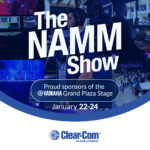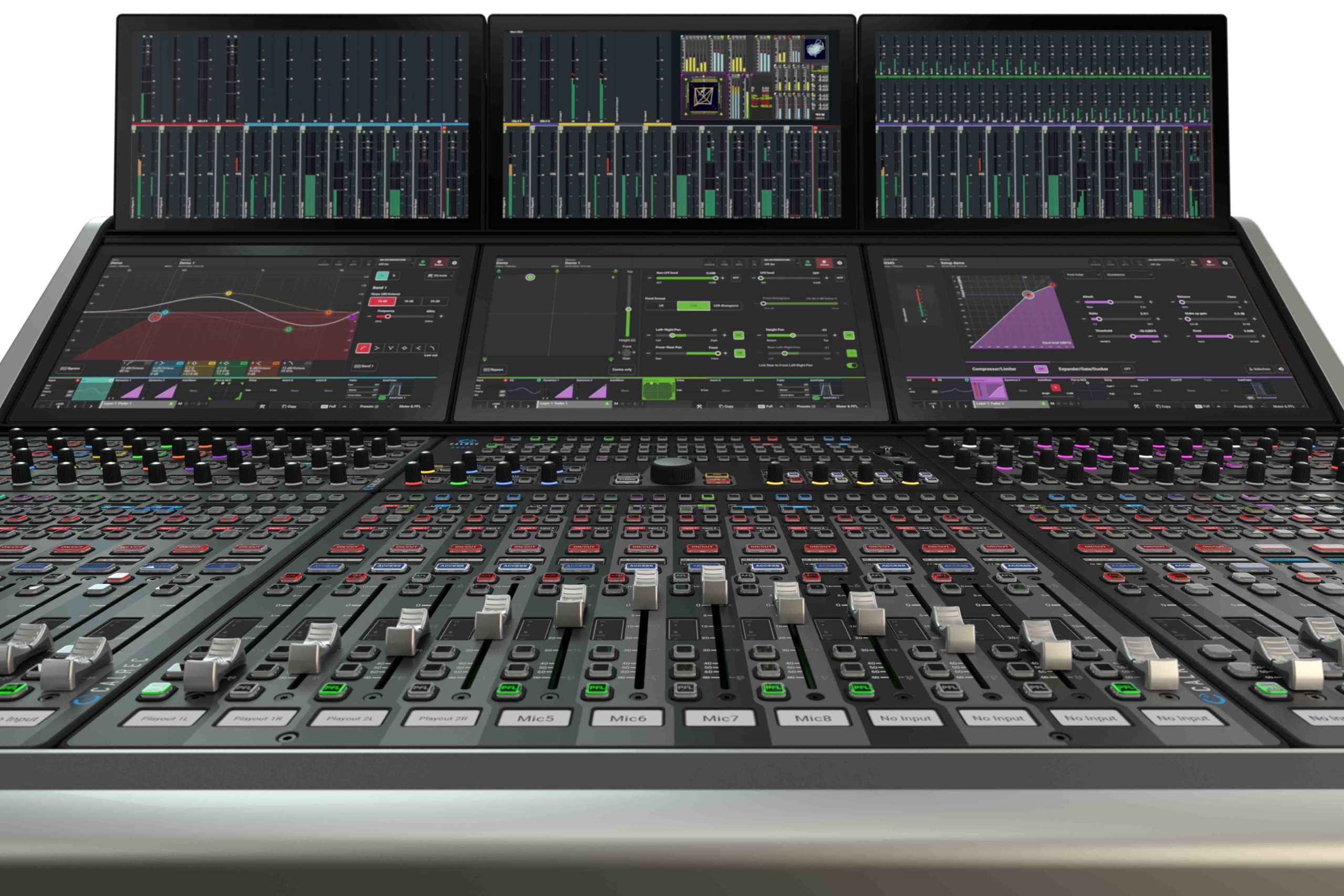For the first time in the US, Calrec will be showing its brand-new audio mixing system – Argo – designed to keep pace with the changes broadcasters are experiencing in their production workflows; including virtualized mixing and, of course, remote production.
Argo has been developed from a flexible control philosophy that breaks the traditional geographic tie lines between processing and control.
Users benefit from an all-new, simple, intuitive, flexible, IP-native surface with supercharged DSP, interchangeable panels and configurable layouts.
Argo comes in two sizes, with both on show: the larger Argo Q model has two mid-level rows of interchangeable panels; and the compact Argo S model has one mid-level row.
Argo is fully modular with interchangeable hardware panels and uses Calrec’s time-served Assist UI at its core.
This means that whether users are working on physical hardware panels or on a remote GUI, the user interface is both familiar and easy to drive. It’s modular panel system encourages broadcasters to adapt surface hardware to meet their unique requirements.
Argo is built around an expanded version of Calrec’s popular ImPulse IP core. At AES New York which is co-located with the NAB Show New York, Calrec will run two Argo console surfaces from a fully redundant pair of ImPulse IP cores.
ImPulse can also be located anywhere; the location of the control surface is not tied to the processing core.
It can power up to four independent mix environments, including headless mixers accessed on the public internet, with each mixer able to access more than 2,350 processing paths on a single console; this provides enough power to deal with the biggest immersive and NGA mixing demands.
Attendees will also be able to demo Calrec’s Type R mixing console, designed to allow customers to take advantage of distributed production and flexible workflows.
Its integrated native IP core provides virtual working practices and integration with station automation systems like Ross Overdrive, Sony ELC and Grass Valley Ignite.
Type R can provide fully automated programming with real-time adjustment of external factors via a standard web browser, and its small and highly portable hardware elements can be quickly added if required.
Powered by standard POE switches, Type R has just three panel options; banks of 6 x faders can be added, as well as user definable soft panels like Calrec’s Large Soft Panel (LSP) and Small Soft Panel (SSP).





